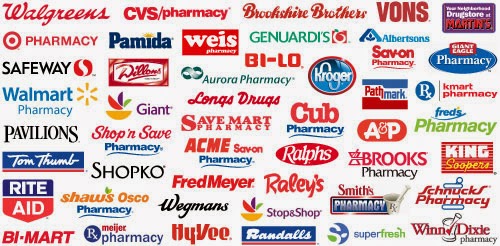Case Study 1: Hotelling's Law for Pharmacy Location and Pricing Strategy
Overview
Teaching: 5 min
Exercises: 15 minQuestions
How does preventing pharmacy movement affect price?
Objectives
Conduct a simple experiment using an ABM keypoints.
Hotelling’s Law
Hotelling’s Law is an economic observation that producers in a market will make their products or services similar to other producers. That is, there is a minimum differentiation between producers. This observation is the opposite of product differentiation. Product differentiation is a typical marketing process to distinguish a product or service from your competitors.
Example of Hotelling’s Law
The common example of Hotelling’s Law is two stores on the same street competing for consumers. Let’s look at the example of fast-food restaurants such as in this article by Presh Talwakar.
Thinks of two fast-food restaurants in an area on the same street. They are placed at the end of the street, one on the north and the other on the south. Theoretically, the shortest distance area they are accessible is up until the middle of the street. Assuming consumers go to the restaurant closest and there is an even distribution, both restaurants cover half the market. However, if one restaurant moves closer to the middle of the street, they will cover more of the market as they are closer to more customers. In doing so, the other restaurant will move closer to the middle as they can ensure that the opposing restaurant doesn’t take from their market share. In doing so, both restaurants end up in the middle. Socially, it is better to be positioned in an accessible location for all consumers to access a product. However, in market competition, it is more favourable to go where most consumers are, which is not always the socially equitable position.
Another example is ice cream vendors.
Applications to Pharmacy
- Consider marketing in pharmacy
- Different pharmacies have a different look and feel
- Hotelling’s Law is that it often pays to look very similar in an economic market segment.



NetLogo Model
Each consumer adds up the price and distance from each store and then chooses to go to the store that offers the lowest sum. In the event of a tie, the consumer chooses randomly. The stores can either be constrained to one dimension, in which case all stores operate on a line, or they can be placed on a plane. Under the normal rule, each store tries to move randomly in the four cardinal directions to see if it can gain a larger market share; if not, it does not move. Then each store checks if it can earn a greater profit by increasing or decreasing the price of its goods; if not, it does not change the price. This decision is made without any knowledge of their competitors’ strategies. There are two other conditions under which one can run this model: stores can either only change prices or only move their location.
Alternative, if you are still in the web application, search for the model: * Hotelling’s Law* in Model Library
Activities
- Play around and adjust the input parameters.
- Set initial conditions for the number of stores
- Modify the strategy
- Change the plane
- Look at the outputs
- What do you notice?
- When comfortable, explore the scenario questions
Scenarios
Scenario 1: We cannot change the price of a prescription (Regulated prescription pricing)
Scenario 2: We cannot move our pharmacy from its current location (Australian pharmacy location rules)
Group discussion
For these scenarios, how is revenue affected?
Speculate what would happen if they were free to move and set their prices.
Further reading
- CVS and Walgreens, original article is from the StarTribune
References
- Ottino, B., Stonedahl, F. and Wilensky, U. (2009). NetLogo Hotelling’s Law model. http://ccl.northwestern.edu/netlogo/models/Hotelling’sLaw. Center for Connected Learning and Computer-Based Modeling, Northwestern University, Evanston, IL.
Key Points
Multi-agent behaviour in pharmacy is a complex system which may be modelled using ABM.
How multiple pharmacies interact within a market can be modelled as a complex system.
Adjustable inputs are geographic location and pricing strategy.